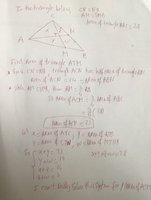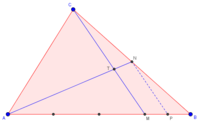I got my values carefully by studying the proportions. I am absolutely aware that the solution I got was not unique to the system. That’s why I said in my initial post that the system can’t be solved to find a unique solution. I was not absolutely randomly picking just any solution of the system. The proportions given by the problem make it possible to rank x, y, w, and z.
The problem
can be solved. Your system of equations, as I said, doesn't contain all the information; the fact that it doesn't have a unique solution does not mean the problem doesn't have a unique solution. I also showed you that your solution is not unique even with the addition of the inequality.
Trial and error (systematic, not merely random) can be a valid solution method for some problems. It is not in this case, no matter how intelligently you did it, unless you used something you haven't mentioned to confirm that your solution is actually correct.
x+y = 21. I showed you how I got that. You’re saying it’s 22, can you show me how you got 22?
What I said was
not that the equation was wrong, but that your claimed
solution, with x=13 and y=9, did not satisfy that equation! You probably just mistyped and meant x=12. Right?
And no, I still can't utilize the information you gave me because one of the pairs of triangles you implied were similar but they are not (the second pair you gave).
I didn't say those particular triangles are similar. I said they can be
used if you "consider" them in some unspecified way. (It looks like I missed your response #5 stating that you inferred that I meant ANB and ANP are similar, due to moderation delays; otherwise I might have said this sooner.)
Please
TRY looking for ways to use my hints. The whole point of assigning this sort of problem is to teach you to think through non-routine problems, without having to be told every step to take.
But here's another hint: In addition to similar triangles, a common fact to use in this sort of area-ratio problem is that two triangles with the same base have areas proportional to their altitudes; another is that two triangles with the same altitude have areas proportional to their bases. Either of those can be used here. (There are probably lots of other ways to get through this problem.)
Finally, if you want efficient help, try showing us what you actually did, rather than just saying it didn't work. We can correct errors, or give more useful hints, if we know the direction you are going.


